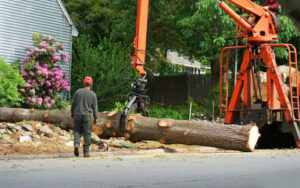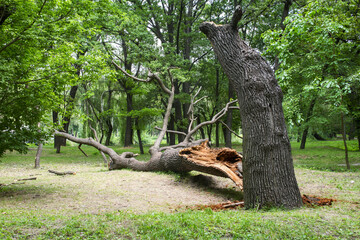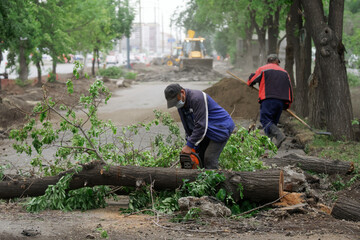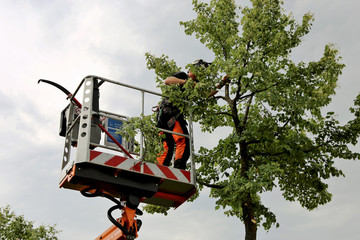Pruning Is an Important Part of Tree Care
A healthy tree can add value to your property, beautify your surroundings, and improve air quality. However, trees require routine maintenance to thrive in the urban environment. Contact an arborist when you see signs such as discolored leaves or early leaf drops. Arborists can diagnose and treat problems before they become serious. Visit https://www.irvinetreeservicepros.com/ for more details.

Pruning is the selective removal of branches, buds, leaves, and other plant parts to control growth, shape plants, and manage the overall appearance of trees and shrubs. It’s also an important part of tree care that promotes health, safety, and structural integrity. Trees and shrubs can become overgrown or weakened without pruning, leaving them susceptible to damage from weather, insects, and diseases. Pruning can be done any time of year but is most effective during the late dormant season.
Pruning can remove dead or damaged branches and promote healthy plant growth by eliminating unnecessary limbs and branches. It also helps protect structures, people, and property from damage caused by falling limbs during storms or high winds. Regular pruning can also reduce the risk of insect infestations and other pest problems since it limits their habitat.
Tree and shrub pruning can include many cuts, including thinning, crown raising, and topping. Thinning is the most common type of pruning and involves removing live branches to reduce a tree’s density and improve light penetration. Crown raising is a technique that shortens a tree’s height, while topping consists of removing the entire top portion of a tree and is considered a highly destructive form of pruning.
Regular pruning can also help encourage flowering and fruit production and maintain a desirable plant form or shape. For example, removing dead or diseased limbs from a fruit tree will promote more abundant harvests the following year, as will removing lower branches that could rub against power lines.
Pruning can be done on all woody plants, from small holly and ash trees to large oaks. However, specific techniques and timing are required for each plant type. For instance, azaleas and lilacs should be pruned just after blooming to prevent them from producing less fruit the following year. And, because some plants bleed profusely from cuts, they should be pruned only by trained professionals with shears or loppers with blades 6 to 10 inches long. That prevents bleeding and promotes the quick healing of wounds.
Many types of insects damage trees and shrubs by defoliating or chewing them, boring into them, piercing their bark, or sucking their sap. Some of these pests are obvious (holes in the trunk, dead or wilting leaves), while others are not so apparent. Identifying and controlling these pests without damaging bees, wasps, and other pollinators requires a concerted strategy that bolsters a landscape tree’s defenses.
A well-designed insect control program may include preventative spray treatments, soil injections, or a combination of these methods to reduce infestations. Your SavATree arborist will visually inspect your plants and recommend the best treatment regimen for your specific plant species and site conditions.
We use low-impact, eco-friendly insecticides, and various methods to minimize populations of damaging pests without harming beneficial insects. Our insect management programs include treatment for the following problems:
Some of these pests damage trees by feeding directly on the foliage, reducing the number of leaves, needles, or fruit they produce. Others infiltrate the vascular system, preventing the tree from absorbing nutrients and moisture. Still, more pests create wilting, spotting, or drying of foliage, stems, or bark.
When insect damage occurs, the first symptom is often visible on the ground as sticky or black resin (honeydew) that bees or caterpillars excrete as they feed. Some insects cause serious damage, such as the caterpillars of several species that defoliate shade trees and ornamental shrubs. Others infiltrate pines, causing them to lose vigor, including the Mountain pine beetle that destroys millions of acres of forest yearly.
The roots of some shrubs and perennials are attacked by root weevils, reducing their growth or destroying them altogether. Various root weevil controls are available, and your arborist will select the best product to control these insects. Keeping your shrubs and perennials healthy with regular fertilization will also increase their ability to resist damage from insects, diseases, and drought. Your arborist will evaluate the nutrient status of your landscape plants and recommend a program to ensure optimal plant health.
Many trees and shrubs are prone to diseases that can significantly impact their health and appearance. The good news is that proper tree care and regular inspections can help to prevent or detect these problems. However, if left untreated, these issues can become serious and potentially dangerous to the structure of your landscape investment. Our certified arborists are trained to identify specific diseases, insects, and environmental stresses that affect your plants and create a green plan for their management.
Fungus infections such as canker, rust, and powdery mildew are common on shade, ornamental, and fruit trees in our region. They are often exacerbated by drought or poor soil conditions. Symptoms of canker and rust diseases include oozing, scab-like lesions on bark, wilting or shriveling leaves, stems, and buds, and the development of dark splotches and necrotic areas around trunks and limbs. Some fungus problems can be prevented by avoiding overfertilizing susceptible species and pruning infected limbs. A fungicide treatment can also be beneficial when the symptoms first appear early in the spring.
Caterpillars are among the most destructive insects on shade and ornamental trees. The eastern tent caterpillar defoliates forests and apple orchards, while the gypsy moth, bagworm, spring and fall cankerworm, pine tip moth, and clearwing moth damage linden, birch, oak, maple, flowering pear, and other landscape trees. In addition, the invasive Japanese beetle has killed many linden and river birch trees, rose bushes, and viburnums. Our team offers targeted insect control treatments to prevent new infestations and kill existing larvae.
Fungal root rots can be as devastating to trees and shrubs as diseases are. Several different fungi, including Phytophthora root rot, Phymatotrichum root rot, and Armillaria root rot, can cause them. This problem is most prevalent in our North Texas calcareous clay loam soils and is often caused by inadequate irrigation, poorly drained soils, or over-fertilizing. Generally, the fungus attacks the roots and eventually leads to root death. Early detection and fungicide treatment are critical to stopping the disease.
When a tree is damaged to the point where it poses a safety hazard or is dying, homeowners might decide to remove it. This process is usually more involved than simply pruning a tree and may involve cabling or bracing. Tree removal is a complex process and should only be done by a professional.
The best way to find a reliable tree service provider is to get referrals from family and friends. Ask them about their experiences with the service providers they’ve used and whether or not they were prompt, professional, and courteous. It would be best if you also looked for someone with several kinds of insurance, specialized equipment, and training to do their job.
Trees are a valuable part of any landscape and can enhance the appearance of a home and increase its value. However, they have their drawbacks. They can block streets or sidewalks, cause damage to buildings or cars, and pose a threat to people or wildlife. For these reasons, it’s important to take care of them.
A professional tree care service company will do its best to save a healthy, living tree whenever possible. That includes removing dead limbs, branches that rub together, branch stubs, and insect infestations. It’s common for these specialists to cut down trees that are dying or in danger of falling over. In many cases, these professionals will also perform stump grinding and wood chipping to complete the job.
Before a tree can be removed, the arborist will assess its height and determine whether or not there’s room to fall it horizontally. That isn’t possible in most urban home landscapes, so the tree must be cut down in sections. The resulting debris will be hauled away, and the stump will be ground down using a special machine.
The specialized machinery and tools required for tree removal can harm the employees. That is why the best tree service companies are bonded and insured. They should also follow the industry’s standard operating procedures to ensure a safe work environment. Falling and being struck by hazards are the leading causes of injury to tree service workers.



